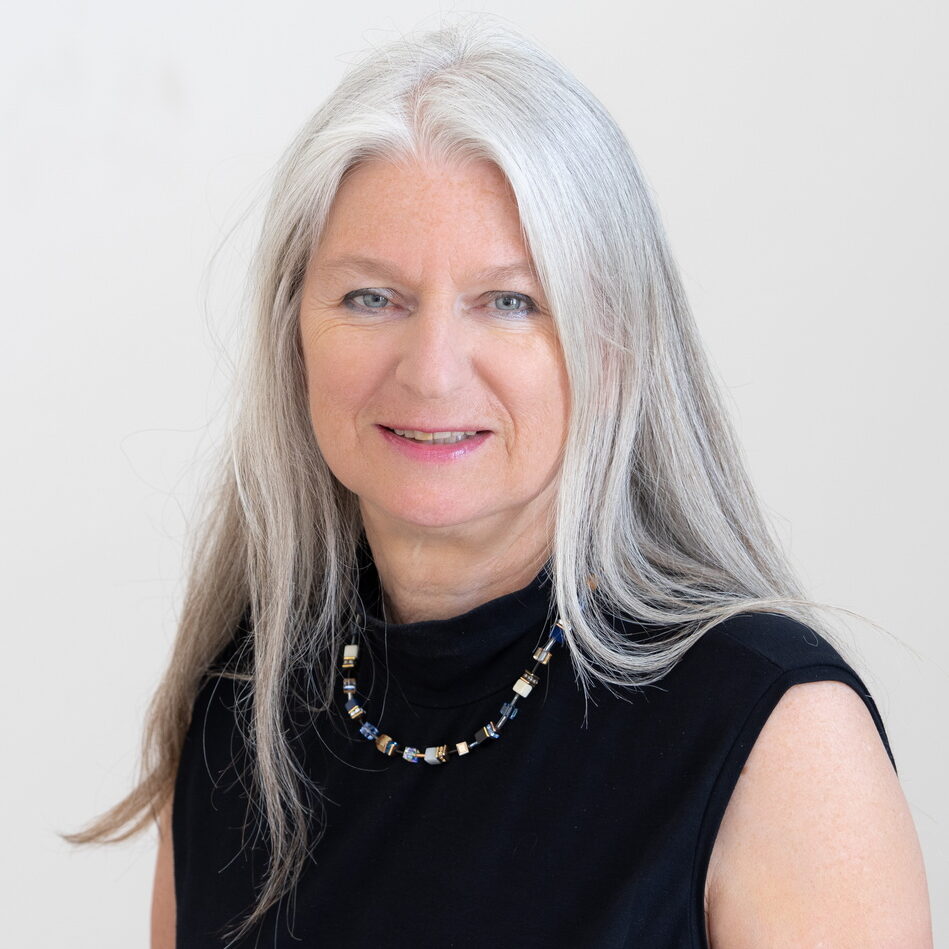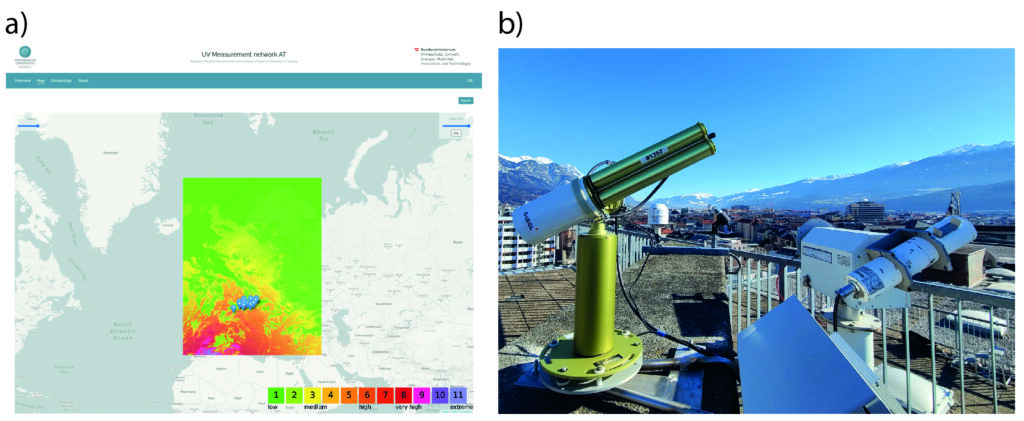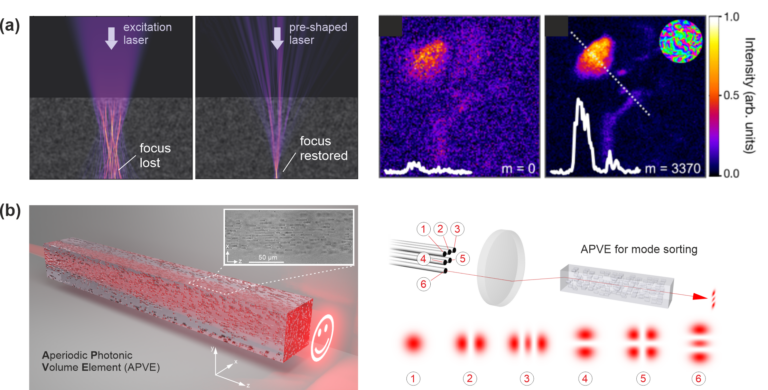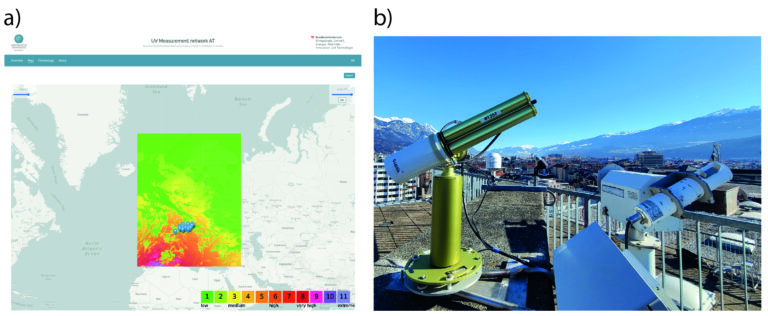
Müllerstraße 44
6020 Innsbruck
Fax: +43 512 9003 70870
Email: Monika.Ritsch-Marte@i-med.ac.at
Website: http://www.i-med.ac.at/dpmp/bmp/
Research Branch (ÖSTAT Classification)
206003, 103037, 302044, 103021, 103040
Keywords
acousto-fluidics, aerosols., biophotonics, diffractive optics, digital holographic microscopy, linear and nonlinear Raman microscopy, optical tweezers, spatial light modulators, super-resolution microscopy, tunable lenses, and UV radiation
Research Focus
A prominent theme of the Institute’s research in recent years has been “wavefront shaping and microscopy”, with special emphasis on programmable and customisable microscopy using liquid-crystal-based spatial light modulators (SLMs). Recently, research interest has shifted more towards super-resolution single-molecule localisation microscopy and adaptive multi-photon fluorescence microscopy to look deeper into biological tissue.
Highlights of this research theme include spiral-phase-contrast imaging, multi-plane imaging, single-shot quantitative differential interference contrast, lensless imaging through a scattering medium, programmable confocal microscopy, axial super-localisation microscopy at the immunological synapse, high NA remote focusing methods and adaptive-optics deep-brain imaging.
A second research theme focusses on acoustic and optical micromanipulation for the contact-free handling of microscopic particles such as micro-organisms, micro-beads, living cells, cancer spheroids and organoids.
Highlights here include the trapping of the largest swimming micro-organisms ever trapped “all-optically”, combined acoustic and optical trapping of even larger specimens as well as holographic optical force and torque measurements.
The Solar UV radiation research group is devoted to the optimisation of spectro-radiometric instruments and the development of analysis techniques for solar radiation spectra and aerosol optical depth.
One of the highlights of the group’s activities is the development and maintenance of the Austrian UV measurement network (UV index).
General Facts
The Institute of Biomedical Physics pursues application-oriented basic research projects devoted to the development of novel optical methods and technologies in medicine and cell biology. At present, there are two research topics: biomedical optics and solar UV radiation. The research has largely been funded externally, e.g. by the FWF, the FFG, the ERC (Advanced Investigator Grant 2010 – 2015) and EU networks.
The Biomedical Optics research groups have a high level of visibility in the international Biophotonics community. In particular, they received recognition for their contributions to super-localisation microscopy in brain tissue, for the advancement of holographic optical tweezers and the development of ‘synthetic holographic microscopy’ using wavefront shaping with spatial light modulators (miniaturised liquid crystal displays with individually addressable micrometre-sized pixels). This is reflected by the number of prestigious awards as well as plenary and keynote talks at large international conferences. The Head of Institute, Monika Ritsch-Marte, is a full member of the Austrian Academy of Sciences (ÖAW) and of the German Academy Leopoldina.
The Solar Radiation and Air Quality research group is involved in various EU-projects concerning ground-based remote sensing. The group maintains several instruments for spectroscopic measuring and solar irradiance and develops retrieval techniques for atmospheric air quality parameters. The group also operates the Austrian UV measuring network.
Research
BIOMEDICAL OPTICS
1. Micromanipulation
(Mia Kvåle Løvmo, Simon Moser, Monika Ritsch-Marte, Franziska Strasser, Gregor Thalhammer-Thurner)
Optical forces and torques, which occur when an intense laser beam is deflected, enable contact-less manipulation of small particles such as living cells or micro-organisms in a precise and flexible manner. Furthermore, measuring the optical forces reveals detailed information about the mechanical properties of, e.g., cells or biological materials on the micro-scale.
During the past 2 years, we have developed a novel holographic measurement method that — for the first time — provides complete information about all optical forces and torques, even
when several particles are trapped at the same time. One outstanding feature of this method is the amenity that no prior knowledge about the specimen’s properties is needed. This is a big step forward compared to previous methods requiring detailed information of a kind that is often not available for biological matter.
Our method enables new applications in the life sciences. For instance, we applied it to measure the mechanical response of red blood cells by stretching them optically, where we used several laser beams addressing the cells directly. We observed that the cells actively adapt their mechanical properties in response to the deformation.
2. Adaptive multi-photon imaging
(Daniel Grünbacher, Alexander Jesacher, Molly May, Juan Muñoz Bolaños, Monika Ritsch-Marte, Maximilian Sohmen)
Multi-photon-excitation scanning microscopy is a powerful tool for imaging structures deep in biological tissues. It uses infrared excitation wavelengths, which are less prone to scattering compared to visible light and can penetrate significantly farther through seemingly opaque tissues such as brain and skin. Our activities aim at significantly increasing the imaging depth by using methods of adaptive optics (AO). The technology combines wavefront measurements and dynamic spatial beam shaping to correct for optical aberrations and scattering effects introduced by the tissue.
3. Design and manufacture of integrated photonic devices
(Alexander Jesacher, Nicolas Barré, Simon Moser)
Direct laser writing is an increasingly used technology for the generation of embedded photonic structures. One underlying fundamental process is the controlled refractive index change of transparent dielectrics by laser irradiation. We develop numerical tools for the design of such structures and experimental methods for their optical characterisation, with the ultimate goal to facilitate the manufacture of highly efficient and integrated Aperiodic Photonic Volume Elements (APVEs).
4. Tunable lenses
(Martin Bawart, Stefan Bernet, Alexander Jesacher, Monika Ritsch-Marte)
In 2008, we had developed and patented a method to construct a lens with adjustable focal length. The lens consists of two thin diffractive elements that are mutually rotated to control
the focal length. More recently, numerous other groups working in the field of metamaterials have taken up the same idea, where tunable “meta-lenses” based on the same basic principles are being fabricated in advanced processes. Thus, we were invited to write a detailed tutorial article on the basics of tunable lenses, which was published in 2021.
In the past 2 years we have developed a new idea of how to increase the achievable focal length range by almost an order of magnitude depending on the angle of rotation, without imposing higher requirements on the resolution of the diffractive elements, i.e., at the same production cost. The new method was published in a theoretical paper in 2022 and will be tested experimentally in future work. We expect that the method can be used in advanced confocal microscopy to increase the axial scanning speed beyond the currently possible limits.
UV RADIATION
(Barbara Klotz, Axel Kreuter, Verena Schenzinger, Michael Schwarzmann, Marie Stöckhardt and Jochen Wagner)
The Solar Radiation and Air Quality research group investigates solar radiation and its implications for air quality, human health and potential biomedical applications through various projects. The group has officially operated the Austrian UV network since 2008, which also includes the real-time publication of UV index maps of Europe from satellite data processing since 2021 (Fig.3a).
The group also operates sun photometers for aerosol remote sensing research and is involved in ongoing COST activities regarding harmonisation of aerosol measurements. As part of an FWF project launched in 2022, the observation site (Fig.3b) is now also part of the Aerosol Robotic Network (AERONET).

Finally, the group has initiated and is co-leading the Austrian involvement in the pan-European ACTRIS (Aerosol, Clouds and Trace Gas Research Infrastructure) activities. In particular, the group laboratory is a designated ACTRIS unit for the calibration of UV-VIS trace gas remote sensing instruments (CREGARS UVVIS-AT). The involvement in ACTRIS is key to future research within the atmospheric science community.
Pictures
Selected Publications
May, Molly A.; Barré, Nicolas; Kummer, Kai K.; Kress, Michaela; Ritsch-Marte, Monika; Jesacher, Alexander: Fast holographic scattering compensation for deep tissue biological imaging.
NATURE COMMUNICATIONS. 2021; 12(1); 4340.
https://doi.org/10.1038/s41467-021-24666-9
Strasser, Franziska; Barnett, Stephen M.; Ritsch-Marte, Monika; Thalhammer, Gregor: Generally Applicable Holographic Torque Measurement for Optically Trapped Particles.
PHYSICAL REVIEW LETTERS. 2022; 128(21); 213604.
https://doi.org/10.1103/PhysRevLett.128.213604
Kvåle Løvmo, Mia; Pressl, Benedikt; Thalhammer, Gregor; Ritsch-Marte, Monika: Controlled orientation and sustained rotation of biological samples in a sono-optical microfluidic device.
LAB ON A CHIP. 2021; 21(8); 1563.
https://doi.org/10.1039/D0LC01261K
Bernet, Stefan: Tunable two-element diffractive lenses with optimal bandwidth utilization.
OPTICS EXPRESS. 2022; 30; 38717.
https://doi.org/10.1364/OE.472896
Schenzinger, Verena; Kreuter, Axel: Reducing cloud contamination in aerosol optical depth (AOD) measurements.
ATMOSPHERIC MEASUREMENT TECHNIQUES. 2021; 14(4); 2787.
Selection of Funding
FWF: SFB F68 “Tomography Across The Scales”, Teilprojekt “Inverse Problems in Imaging of Trapped Particles” (F 6806-N36), Ritsch-Marte Monika, € 540k, 2018-2022 and prolonged 2nd period € 520k, 2022-2026
FWF: “3D diffractive elements through fs-laser direct writing” (I 3984-N36) Jesacher Alexander, € 180k, 2020-2023
FWF: “Deep brain vision: 3D adaptive 2-photon excitation fluorescence microscopy” (P 32146-N36) Jesacher Alexander, € 490k, 2019-2023
FWF: “3D nanoscopy of the immunological synapse” (P 30214-N36) Jesacher Alexander, Gerhard Schütz, € 350k, 2017-2021
FWF: “Direct measurement of optical torque” (P 29936-N36) Thalhammer Gregor, € 320k, 2017-2022
EU: “ACTRIS IMP” (D-150200-012-012) Wagner Jochen, € 66k, 2020-2023
FFG-Bridge: “KombiDOE-Kombinierte diffraktive optische Elemente mit kontinuierlich einstellbaren Eigenschaften“ (D-150200-014-012) Bernet Stefan, € 170k, 2018-2021
FFG: „AMiDA“ (D-150200-017-011) Kreuter Axel, € 41k, 2018-2021
Bundesministerium f. Nachhaltigkeit und Tourismus: „Messung und Analyse der solaren UV- Strahlung in Österreich“ (D-150200-017-012) Kreuter Axel, € 1.300k, 2019-2029
FWF: “Deep Brain Vision: 3D adaptive two-photon microscopy” (M 3060-NBL) May Molly, € 164k, 2021-2023
(bis 31.12.2021)
FWF: IGDT-ART (SUB05) (W-153520-017-041-05) Ritsch-Marte Monika, € 190k, 2021-2025
FWF: “Synergetische Aerosol Fernerkundung mit Pandora in ACTRIS“ (I 6016-N) Kreuter Axel, € 330k, 2022-2026
FWF: “Superresolution Protein Imaging“ (P 36022-B) Jesacher Alexander, 197k, 2022-2026
EU: “ATMO ACCESS” (D-150200-012-014) Wagner Jochen, € 75k, 2021-2023
Collaborations
Drinkwater, Bruce, University of Bristol, UK
Schütz, Gerhard, Technical University of Vienna, Austria
Barnett, Stephen, University of Glasgow, UK
Schmidt, Michael, Friedrich-Alexander University of Erlangen-Nürnberg, Erlangen, Germany
Nevas, Physikalisch-Technische Bundesanstalt, Berlin, Germany
Gröbner, World Radiation Center, Davos, Switzerland
Booth, Martin and Salter, Patrick, University of Oxford, Oxford, UK


